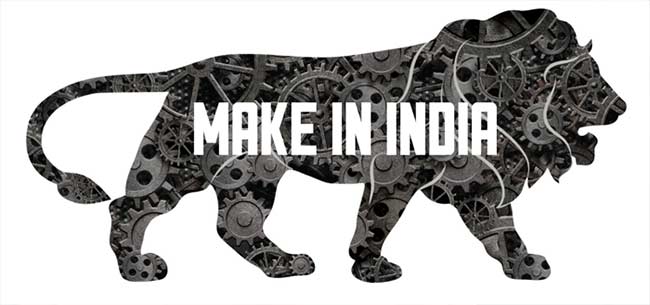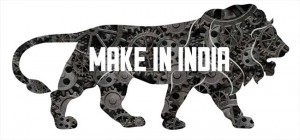Impact of the New Government policies on Entrepreneurs and Marginalized Sections
It’s been almost a year since BJP bagged a record breaking victory in the Lok Sabha; with Prime Minister Narendra Modi leading the show, repeating his promises to create a sustainable economic environment for entrepreneurs and ensuring employment growth, creating a new hope in the hearts of millions of young Indians. Since he took charge, numerous policies have been introduced (Make in India, Jan Dhan Yojana, Sukanya Samriddhi Yojana, to name a few) while some have been scrapped off to introduce new ones (Planning Commission being replaced by NITI Aayog). While the policies have been met with a mix of approval and criticism, we will analyse how these affect the budding entrepreneurs and the marginalized sections of the country.
With the introduction of Make in India campaign in September, 2014 the Prime Minister has managed to instil a confidence in the people to promote indigenous products, in an attempt to increase the self reliance of the country. Invariably, it will have a positive impact on the economic growth of the country. It will encourage domestic companies to invest in the prime 25 sectors, thus expanding their manufacturing capability. Also, it will provide a new platform for entrepreneurs to employ their creativity in finding solutions to the problems faced by these companies. Thus by creating an environment where everyone can coexist and work in harmony, not only India will increase its self reliance, but it will also help in the reduction of the unemployment problem.
This is what an ideal scenario looks like. But in the real time, not everything is so optimistic. Even though the policy portrays a very positive image, it is a very bold move by the government. Implementation of this will be a slow growth process due to the unavailability of adequate resources to carry out such large plans in a short period of time. Hence, to make this campaign inclusive in our economy, it is necessary to keep upgrading and evolving it incrementally into the next generation.
Another one of the bold moves of the BJP government is the Union Budget 2015, which presents a long term growth model for India. While key changes being the decrement in corporate taxes and increment in utilities sector, the budget has relaxed a lot of norms in the business sector. Increase in CENVAT credit limit from 6 months to 12 months, time period for receiving capital goods to 2 years will increase the ease of credit availability for entrepreneurs. Allotting MUDRA bank a corpus of Rs 20,000 crores and credit guarantee corpus of Rs 3000 crores will benefit technology start-ups and businesses. Also, extra support to entrepreneurs will be provided by introducing SETU (Self Employment and Talent Utilization) and allotting Rs 1000 crores to NITI for the same to support all aspects of startups and self employment areas. In a nutshell, the budget has favored entrepreneurs by liberalizing credit availability and ease of doing business. This will help businesses to expand, in turn catering for the growing needs of the economy.
Coming to a more controversial bill, the Land Acquisition Bill, in which the government has relaxed norms for acquiring land in lieu of a higher compensation and guaranteed rehabilitation, has faced continuous criticism from the opposition parties, before it was passed in the Lok Sabha after few amendments. However, economists and financial analysts are upbeat about the government’s move, anticipating a rise in infrastructure and manufacturing sectors. Criticized for its “anti-farmer” amendments, rallies and dharnas were conducted to oppose it. With the relaxation of the acquisition norms, it is true that the livelihoods of a lot of farmers will be affected, considering the fact the 60% of our economy is agrarian. But at the same time, the bill also presents higher compensation to those affected, in addition to skill development training to help them find alternate options. This is easier said than done. Proper appeal mechanisms need to be set up, where the owners of the land can get their problems addressed and looked into. Also, bureaucracy in the allotment of land needs to be eliminated. A lot of times land is bought cheap from the owner by doing favours to the government and then sold at exponentially high rates to private companies. Instead, land could be leased to the company for the required amount of time, which will reduce the costs incurred during acquisition. Also, the problem of slow acquisition of land still persists. SIA studies should be made more efficient, which would reduce the hassle involved in acquiring land. This policy, although liberal for investors and businessmen, needs careful implementation keeping the owners’ (farmers, tribals) interests in mind. Also, at the same time, concerns about environmental degradation need to be taken into account.
In an attempt to improve the financial inclusion in our country, the Prime Minister Jan Dhan Yojana kick started in September, 2015, witnessing 1.5 lakh zero balance bank accounts for the poor opening in a single day, with SBI taking the lead. In this way, the poor can get credit facilities from the banks, instead of relying on high interest credits provided to them by greedy money lenders. Also, the subsidies can be transferred to their accounts, which will reduce the money leakages by the government authorities to a great extent. Since the government has promised the banks to reimburse the costs, the burden will ultimately fall on the tax payers.
Apart from these, with the promise of building 60 million houses in urban and rural areas and 24/7 electricity to the remaining 20,000 villages by 2017 boosts the growth in infrastructure sector. This is an adaptation of Modi’s Gujarat model on a wider scale. Keeping these policies and the various others which have been introduced and will be introduced in the future, the government is on the right track of bringing economic growth and stability in the country. Our economy is on the right path of recovery. But there are still a lot of challenges and road blocks which it has to face before it reaches stability. Centre needs to thrive to overcome these challenges. Only time can tell what the long term effects of these policies and various others has on the people of our country.





14 Comments. Leave new
Good effort!
Thank you for appreciating it!
On all accounts, I support you. A fantastic article. Loved it! Now let us see how the Goods and Service Tax comes out.
Thanks Akul! Yes, we have a lot to analyze with new policies coming up.
In a short span, the new government has introduced quite a lot of changes. Some seem very promising. However, only time will tell how well these are implemented in the interest of the nation. Let’s hope for the best anyway.
Great article from your side. Keep up the spirit. 😀
Yes exactly. The new government has thrown a wave of optimism over us, but with time we will be able to quantify how realistic it was.
Thank you. 🙂
Well said..!
Thanks!
Nice 😀
Its good to see the optimism shown on the one-year old government. I believe that the impatient citizens should understand that bringing changes on a national level is not as easy as waving a magic wand. Modi is trying to build a strong foundation and it would take atleast 2-3 years to experience the positive effects.!
Nice.
Make In India will bring a change in India’s economy.. Well written!
Best policy taken by modi goverment 😀
Good work 😀
hopefully it will benefit our economy